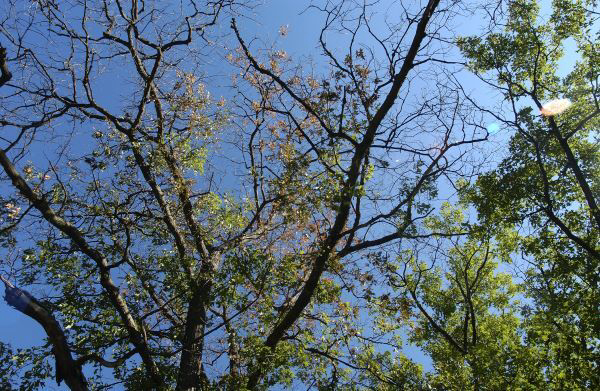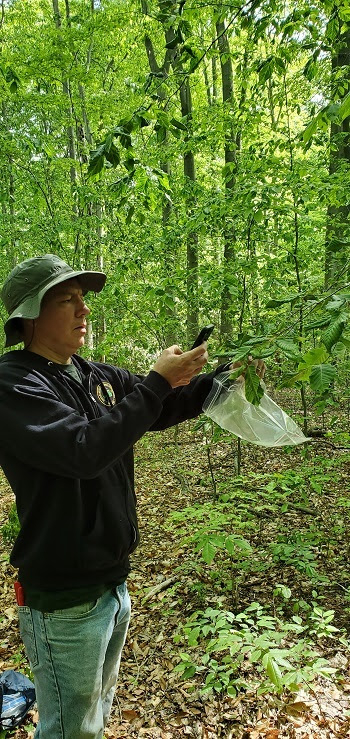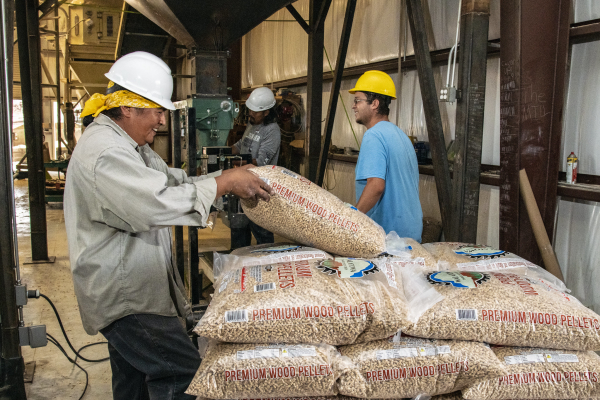DNR advises caution to prevent spread of oak wilt disease
July 15 marks the end of the three-month window when oak wilt can be transmitted from diseased to healthy red oak trees. Although this time frame is coming to a close, the Department of Natural Resources reminds residents not to move wood from trees with oak wilt. Wood from oak wilt-killed trees can produce spores, which can infect healthy oaks if (the infected trees are) wounded between April 15 and July 15 the following year.
According to Dr. Robert Heyd, forest health management program manager for the DNR’s Forest Resources Division, oak wilt is a serious disease of oak trees. It mainly affects red oaks, including northern red oak, black oak and pin oak. Red oaks often die within a few weeks after becoming infected. Because white oaks are more resistant, the disease progresses more slowly.
“The normal time-tested advice is to prevent oak wilt by not pruning or otherwise ‘injuring’ oaks from April 15 to July 15,” Heyd said.
He added that the spread of oak wilt occurs during this time of year as beetles move spores from trees killed last year by oak wilt to wounds on healthy oaks.
Oak wilt has been detected in Alcona, Allegan, Alpena, Antrim, Barry, Benzie, Berrien, Calhoun, Cass, Cheboygan, Clinton, Crawford, Dickinson, Genesee, Gladwin, Grand Traverse, Iron, Kalamazoo, Kalkaska, Kent, Lake, Lenawee, Livingston, Macomb, Manistee, Menominee, Midland, Missaukee, Monroe, Montcalm, Montmorency, Muskegon, Newaygo, Oakland, Ogemaw, Oscoda, Ottawa, Roscommon, Saginaw, Shiawassee, St. Joseph, Van Buren, Washtenaw, Wayne and Wexford counties.
Although oak wilt hasn’t been detected in every Michigan county, Heyd said the need for vigilance is present statewide.
Spring is a popular time for people to move firewood to vacation properties and other locations. During this April-to-July period, Heyd said that it’s vital not to move wood from oak wilt-killed trees. These trees are often cut into firewood and moved, sometimes many miles from their original locations. Any wounding of oaks in this new location can result in new oak wilt infections.
“With the transport of firewood and other tree-related activities, you have to assume the risk is present, whether you live in metro Detroit or in the Upper Peninsula,” Heyd said.
Once an oak is infected, the fungus moves to neighboring red oaks through root grafts. Oaks within approximately 100 feet of each other – depending on the size of the trees – have connected or grafted root systems. Left untreated, oak wilt will continue to move from tree to tree, progressively killing more red oak over an increasingly larger area.
“There are other oak problems that can easily be confused with oak wilt,” Heyd said. “Unlike most other problems, oak wilt causes the tree to suddenly drop its leaves in July or August. The first step is to confirm oak wilt if present. If confirmed, you will be given information on treatment options.
To report a suspected oak wilt site, email DNR-FRD-Forest-Health@
To get more information on the background, symptoms and prevention of oak wilt, visit http://michigansaf.org/
To learn more about other forest health issues in Michigan, go to www.michigan.gov/foresthealth.






